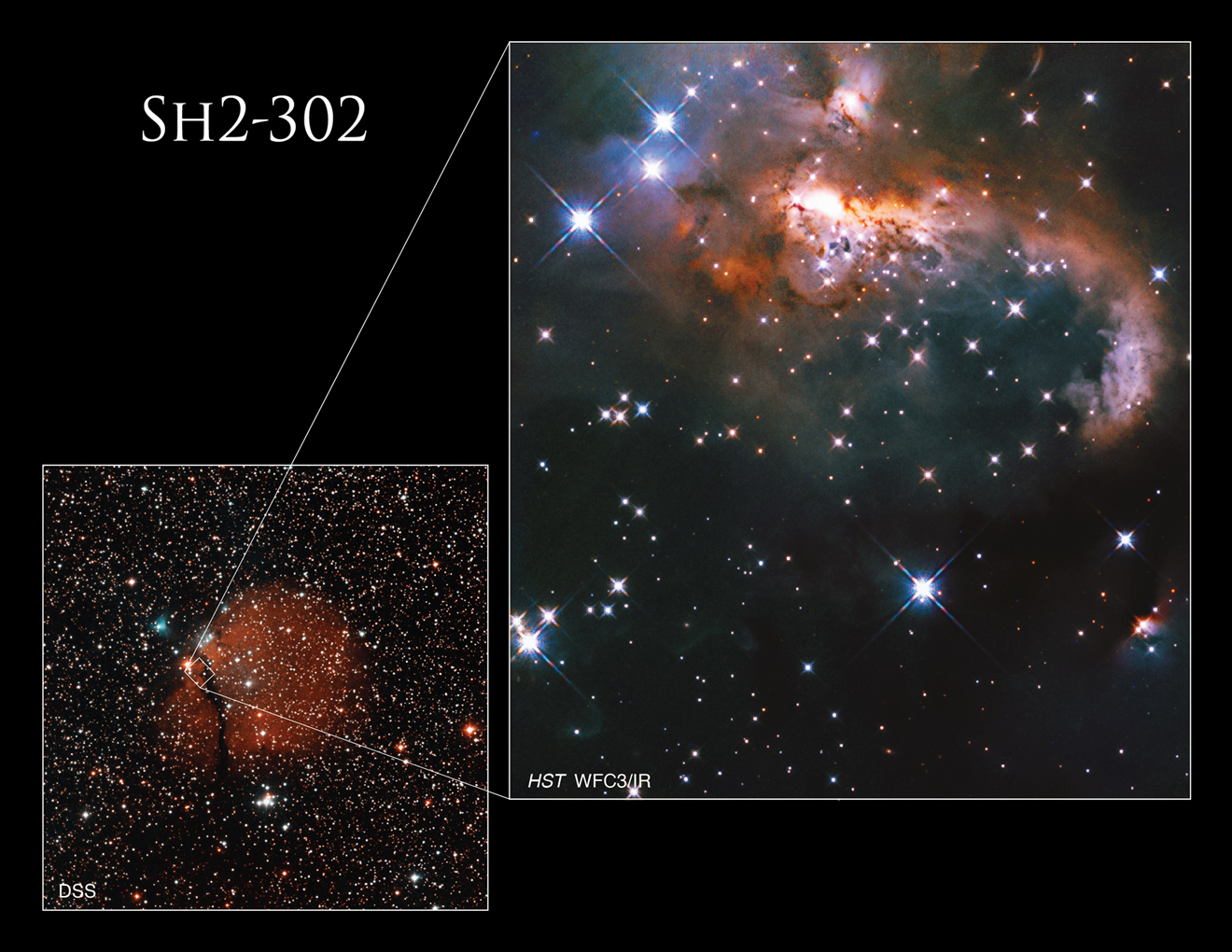Hubble telescope sees a space 'snowman' thousands of light-years away
The new image shows a lot of glowing gas.

A new release from the Hubble telescope's vast archive shares an incredible space "snowman" filled with glowing gas.
The image shows the Snowman Nebula, which is a cloud of gas and dust in deep space. The Hubble Space Telescope's sharp eyes picked up the object from a distance of 6,000 light-years away, and rendered the image in a time exposure since the glow of the gas is very faint.
"Emission nebulas are diffuse clouds of gas that have become so charged by the energy of nearby massive stars that they glow with their own light," NASA said in a statement about the new image.
Related: The best Hubble Space Telescope images of all time!
"The radiation from these massive stars strips electrons from the nebula's hydrogen atoms in a process called ionization," the statement continues. "As the energized electrons revert from their higher-energy state to a lower-energy state, they emit energy in the form of light, causing the nebula's gas to glow."
The famed telescope picked up this new image during a survey of massive- and intermediate-size "protostars," or newly forming stars. Hubble used its Wide Field Camera 3 instrument "to look for hydrogen ionized by ultraviolet light from the protostars, jets from the stars, and other features," NASA officials wrote.

Hubble isn't quite working at its best. In late October, a synchronization error with its internal communications forced all five of its science instruments offline.
Get the Space.com Newsletter
Breaking space news, the latest updates on rocket launches, skywatching events and more!
The team recovered the Advanced Camera for Surveys (ACS) on Nov. 7, and the same Wide Field Camera 3 responsible for this image on Nov. 21. WFC3 is the most heavily used of Hubble's instruments.
The observatory's other three instruments remain in a protective "safe mode" as ground engineers continue to carefully troubleshoot issues on the 31-year-old observatory. The Hubble team will next address an instrument called the Cosmic Origins Spectrograph, which can observe far-ultraviolet light.
Although astronauts on five different missions visited Hubble to repair and upgrade the observatory, no additional visits are planned; servicing missions relied on NASA's space shuttle program, which ended in 2011.
Follow Elizabeth Howell on Twitter @howellspace. Follow us on Twitter @Spacedotcom and on Facebook.
Join our Space Forums to keep talking space on the latest missions, night sky and more! And if you have a news tip, correction or comment, let us know at: community@space.com.

Elizabeth Howell (she/her), Ph.D., was a staff writer in the spaceflight channel between 2022 and 2024 specializing in Canadian space news. She was contributing writer for Space.com for 10 years from 2012 to 2024. Elizabeth's reporting includes multiple exclusives with the White House, leading world coverage about a lost-and-found space tomato on the International Space Station, witnessing five human spaceflight launches on two continents, flying parabolic, working inside a spacesuit, and participating in a simulated Mars mission. Her latest book, "Why Am I Taller?" (ECW Press, 2022) is co-written with astronaut Dave Williams.
